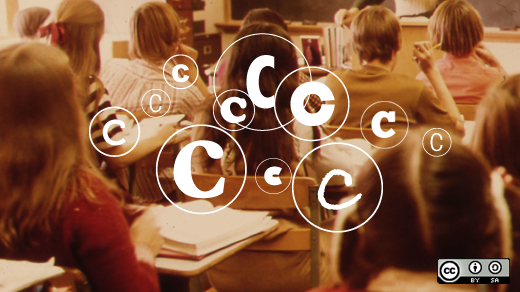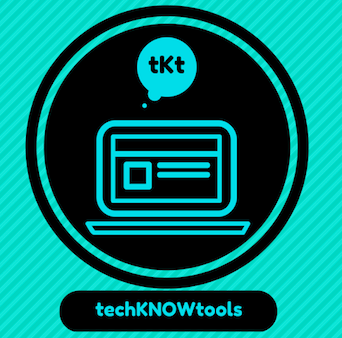In planning my courses this term, the textbook for my LTEC 4000 course will be OPTIONAL. With a wealth of training and development resources digitally available online, in databases, from many professional organizations, and in our library system, I decided to have my three sections of my class be rhizomatic in their learning. (Thanks for modeling this learning approach for a few years now, Dave.) Learning is more than consumption. By encouraging my students to curate their own knowledge, I hope it will help contextualization how these course objectives are applicable for the world of work. This semester LTEC4000 will aggregate training and development content in a wiki. Here’s to giving ownership to the learning process through research inquiry, critical thinking, and content contribution. Wish me luck!
 In thinking about digital curation and online literacy, I want my students to consider how they share, remix, and adapt content they discover for training and development. In the course, I hope this wiki content will scaffold project development this semester; however I think it’s important to discuss copyright, fair use, and intellectual property as they might apply some their training and development academic work to their own workplace.
In thinking about digital curation and online literacy, I want my students to consider how they share, remix, and adapt content they discover for training and development. In the course, I hope this wiki content will scaffold project development this semester; however I think it’s important to discuss copyright, fair use, and intellectual property as they might apply some their training and development academic work to their own workplace.
Here are few of definitions (listed below) and I am gathering resources to share with my students around copyright and attribution. Let me know if you have further suggestions/resources to share. Thanks!
 //embedr.flickr.com/assets/client-code.js
//embedr.flickr.com/assets/client-code.js
Copyright
The Basics of Copyright [Video; 6:19 minutes]. This is an introductory video in copyright law, specifically about how to share copyrighted material at work while still respecting the rights of the content creators. Will you require permission before using materials? Do you ask permission before using protected content?
- Copyright law applies to all works – print & electronic
- Protected: Books, magazines, online articles, songs, screens plays, choreography, art, software, work, software, podcasts, and photos
- Not Protected: Ideas, facts & data; government items
- Know the facts about copyright, not the myths
- Get permission if required (when in doubt get permission)
- Just because you found it online, & it is publicly available does not mean it is free to use
- Not sure? Just ASK: legal council at your workplace or an information professional (in the College of Information) or at UNT Libraries for advice.
- UNT Copyright Resources https://copyright.unt.edu/
- CLEAR Copyright Guide for Instructors http://clear.unt.edu/copyright
Fair Use
Fair Use from copyright.gov:
“Fair Use is a legal doctrine that promotes freedom of expression by permitting the unlicensed use of copyright-protected works in certain circumstances. Section 107 of the Copyright Act provides the statutory framework for determining whether something is a fair use and identifies certain types of uses—such as criticism, comment, news reporting, teaching, scholarship, and research—as examples of activities that may qualify as fair use.” 
Specifically, there are four requirements for fair use of materials:
-
- The purpose is for nonprofit, noncommercial educational use (typical cases).
- The nature of the copyrighted work is consistent with the proposed use.
- The amount and substantial of the original work involved some small uses can be considered an infringement, that is, a small portion involves the core idea in the copyrighted work.
- The effect of using the copyrighted work is not likely to deprive the copyright holder of sales or market interest.

Creative Commons
Wanna Work Together? from Creative Commons on Vimeo.
Creative Commons copyright licenses and tools allow for content to be shared beyond the traditional “all rights reserved” setting and decide on the best form of attribution for their work. The goal is to refine how copyright works and allows content creators to CHOOSE if they want to retain copyright while letting others copy, distribute, and make use of part of their work. Creative Commons licenses provide:
“everyone from individual creators to large companies and institutions a simple, standardized way to grant copyright permissions to their creative work. The combination of our tools and our users is a vast and growing digital commons, a pool of content that can be copied, distributed, edited, remixed, and built upon, all within the boundaries of copyright law.“
To enhance your learning and training materials, you might want to find creative commons and public domain images. Certain social media sites, such as Flickr Creative Commons, even offer users content with specific attribution for use. There is even a Creative Commons Search to aggregate even more content to share, use and remix, including media, images, video, audio, music, photography, and web resources. Want to learn more about Creative Commons? Check out UNT CLEAR‘s Creative Commons Guide.

Nice topic. Reminds me of #rhizo15 blogposts list
LikeLike
Thanks, Lenandlar. #rhizo14 and #rhizo15 gave me some inspiration, INDEED!
LikeLike
Thank you professor this will be most helpful
LikeLiked by 1 person
Reblogged this on @PaulGordonBrown and commented:
reblogging!
LikeLike